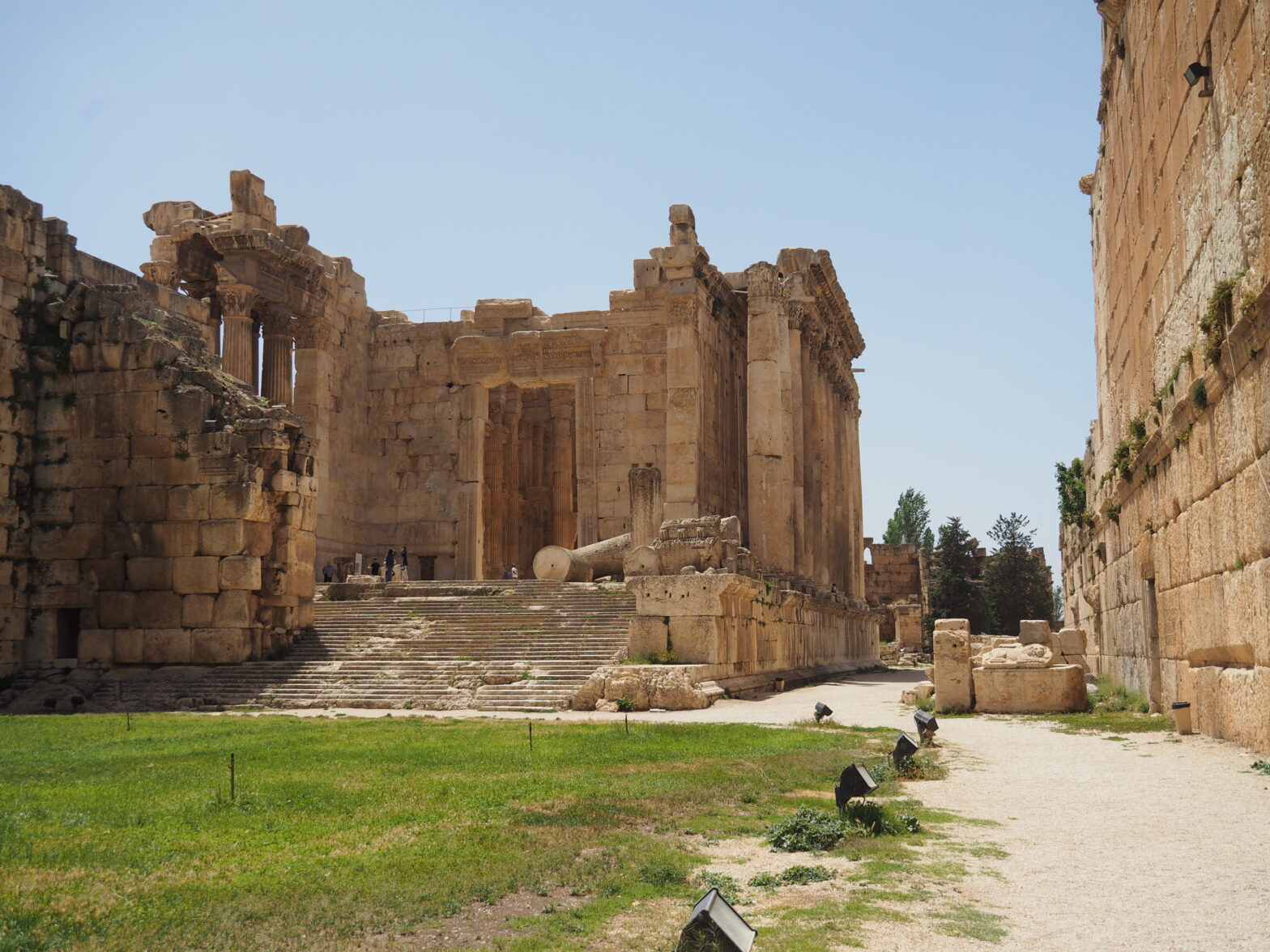While waiting in Beirut for a visa to enter Syria in May 2018, we took advantage of the free time to visit Baalbek, which had only recently reopened to tourists. Terrorist groups had been ensconced in Arsal not far to the north for some years, but had finally been forced out by a combination of soldiers from the Lebanese army and Hezbollah, and in coordination with the UN over the refugee camp there. As it happened, at the time we visited it was just days before the Lebanese elections, - the first for nine years - in which Hezbollah-linked MPs gained a majority of seats in the Parliament. Thousands of people were returning to their homes in the Beka'a valley ahead of the vote, so the road was very busy -
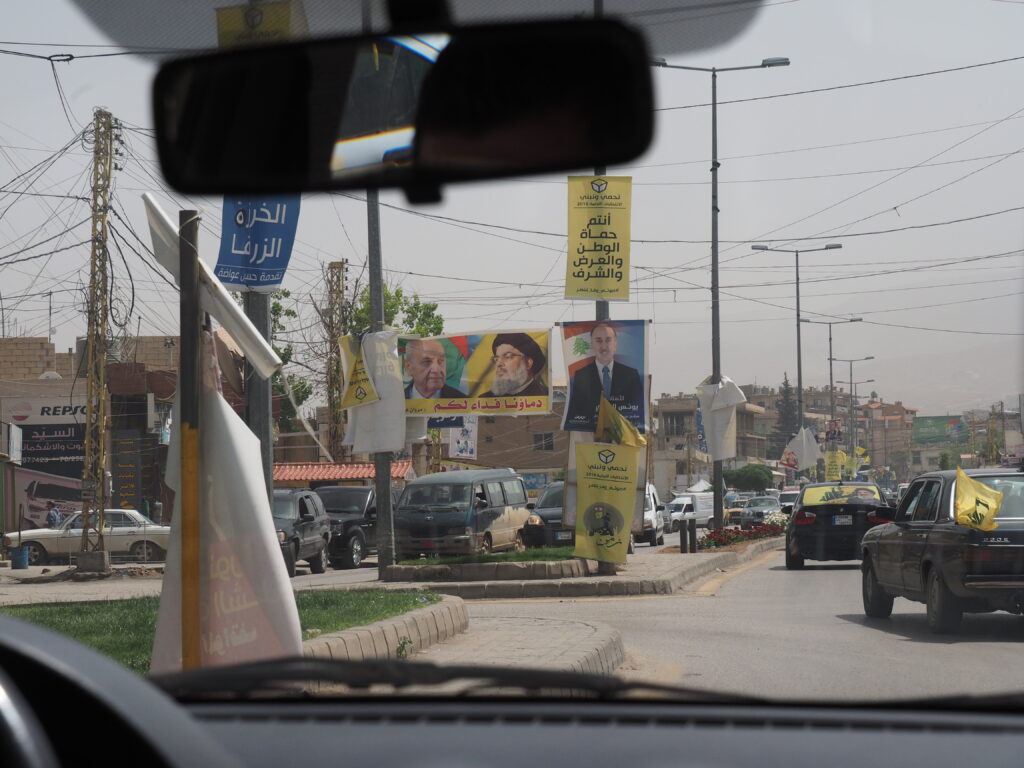
Travelling over the hill from Beirut on the road east to Damascus, Baalbek is some way up the Beka'a valley, which runs from south to north parallel to the ridge of Mount Lebanon, and separated from Syria to the east by a lower range of mountains. Both that border crossing and the one north of Baalbek have now been made impassable by Israeli bombing. The border is of course a relatively recent phenomenon, and there is little to distinguish the pattern of settlements and sects between Lebanon and Syria. Until the war on Syria exploited these sectarian and tribal differences to foment a 'civil war' to the West's advantage, people continued their traditional lifestyles and cooperative communities without significant problems, as illustrated in the two pictures below, and described in this photo-essay about the Resistance in South Lebanon. While 'Israel' claims it is targeting Hezbollah sites in Lebanon, it has actually been quite indiscriminate - hitting Christian and Maronite towns as well as Druze and Shia communities. This may be partly in the hope of turning them against Hezbollah - but the opposite has happened, as people of all faiths unite in anger and opposition to Israel's barbaric attacks and demolition of civilian buildings and lives. Perhaps the regime imagines that a threat to the World Heritage site in Baalbek can also be played as the fault of Hezbollah, much as the similar threat of ISIS was played in Mosul with videos showing men breaking marble statues with sledge-hammers - and of course in the targeting and destruction of the ancient city of Palmyra, as described in part 1 of this tale. So it's important to show what is at risk if the Zionist project and war on Lebanon cannot be stopped - and hence why it must be. Of my photos below, the first shows the entrance to the Temple of Bacchus as I photographed it in May 2018 - and surely one of the most spectacular of Roman buildings still standing. The exterior of this chamber is surrounded by a portico of massive columns, as seen in the leading picture as well as in the video below. The preservation of its carvings is also remarkable, unchanged since it appeared to British painter David Roberts in 1839, shown in the second image below. ( I imagine that restoration works in the intervening two centuries have lifted the central key stone of the arch back up from its precariously poised position in his painting)
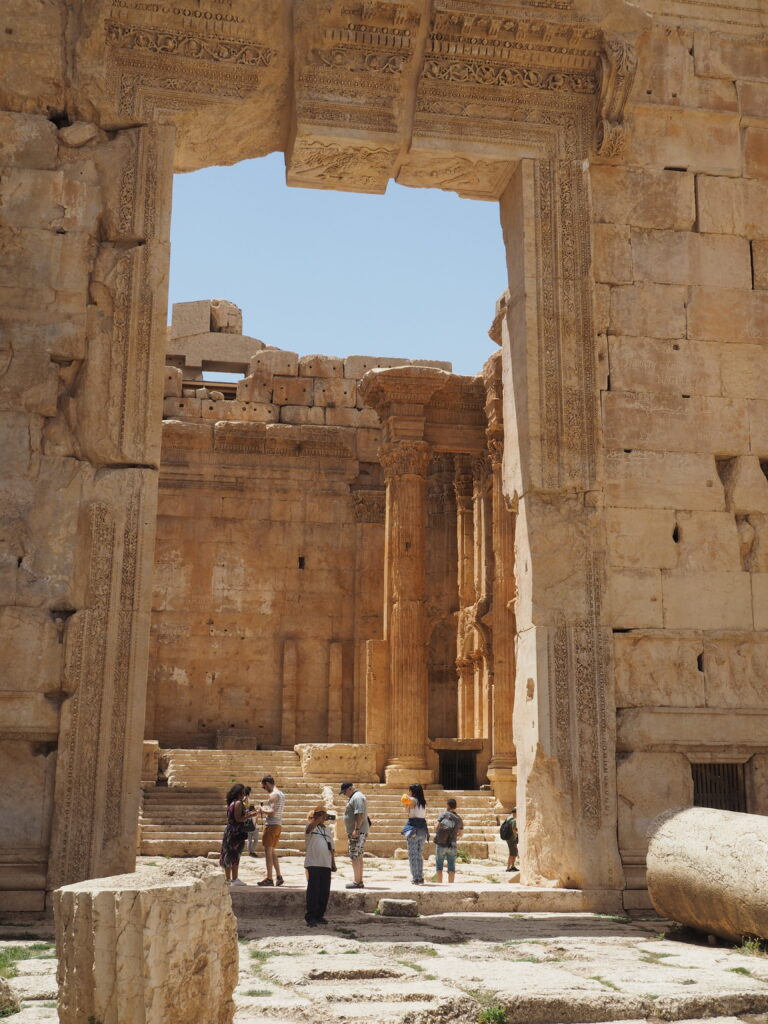
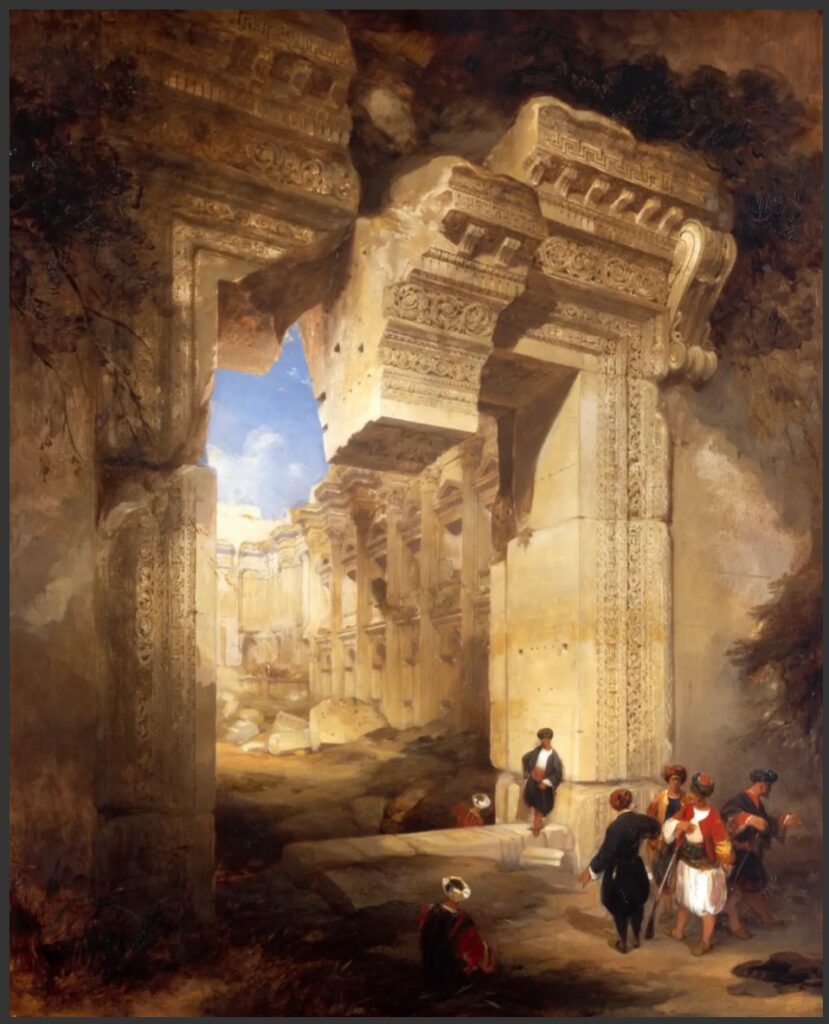
It is impossible to do justice to the whole set of buildings as they are now, leave alone to what was once there. That included an even greater colonnaded building on the mount above the Temple of Bacchus, from which I took the video below. It fails to show the row of six columns that still tower over the site, which at the time of our visit were covered in scaffolding. These can however be seen in another Roberts painting of the scene in 1840.
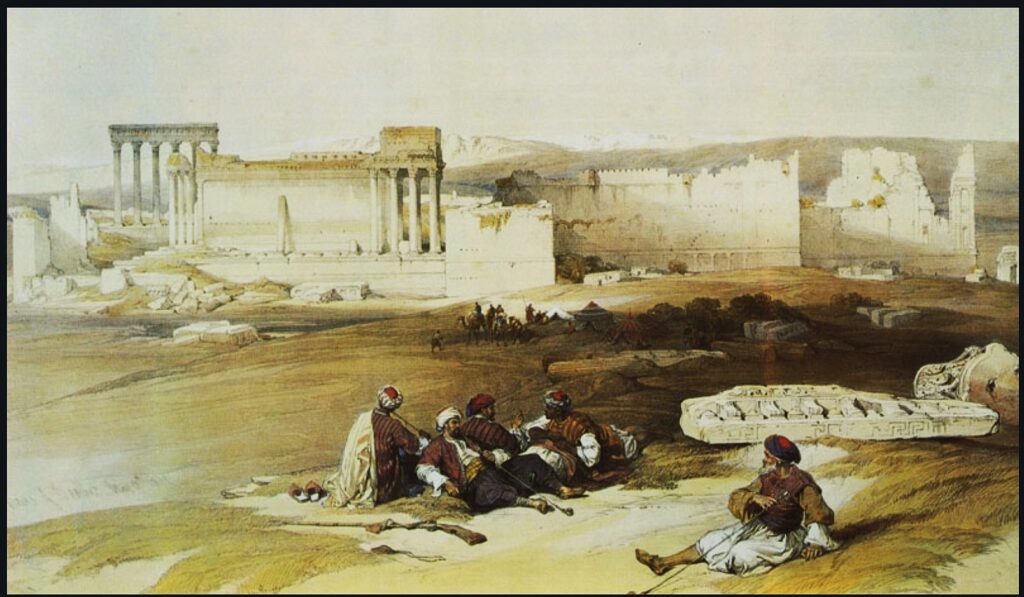
My short video starts looking in the direction of the building hit by Israeli missiles or bombs on the 7th of November, and finishes looking West towards Mount Lebanon and towards the main entrance to the palace complex. The doorway at the base of the columns leads into the ‘chamber of Bacchus’ seen in the photos above.
We must stand in awe of the incredible achievements of the Roman empire, and technical ability in constructing such massive stone buildings without fuel-powered machinery, and doing so in a way that has enabled them to survive for 2000 years. But evidently the power-crazed and unhinged Zionists occupying Palestine feel no such awe in the face of Rome's enduring power. Perhaps, God forbid, these men feel the need to show how they are capable of defying it, and doing so without a care in the world, just as they kill and maim children carelessly in Gaza, as well as in Lebanon. The strikes on Baalbek - which are of course the prime subject of this article - destroyed an old Ottoman mansion next to the Roman palaces while also killing a number of civilians, including children. My composite photo below is taken from a short video of the scene after the Israeli strike, showing the other side of the Temple of Bacchus as well as the six columns remaining of the upper Temple of Apollo. While this outrageous and dangerous attack on Lebanon's sovereign territory did cause some UNESCO protests, there were no consequences for the Zionist regime, nor threats to suspend cooperation should the strikes be repeated or intensified. It seems we must rely on 'Israel's' good will and honest intentions - of which there are clearly none. The road curving round to the right in the upper photo leads into the road visible on the left of the lower photo, with the latter also showing a small temple or mausoleum outside the main palace complex.
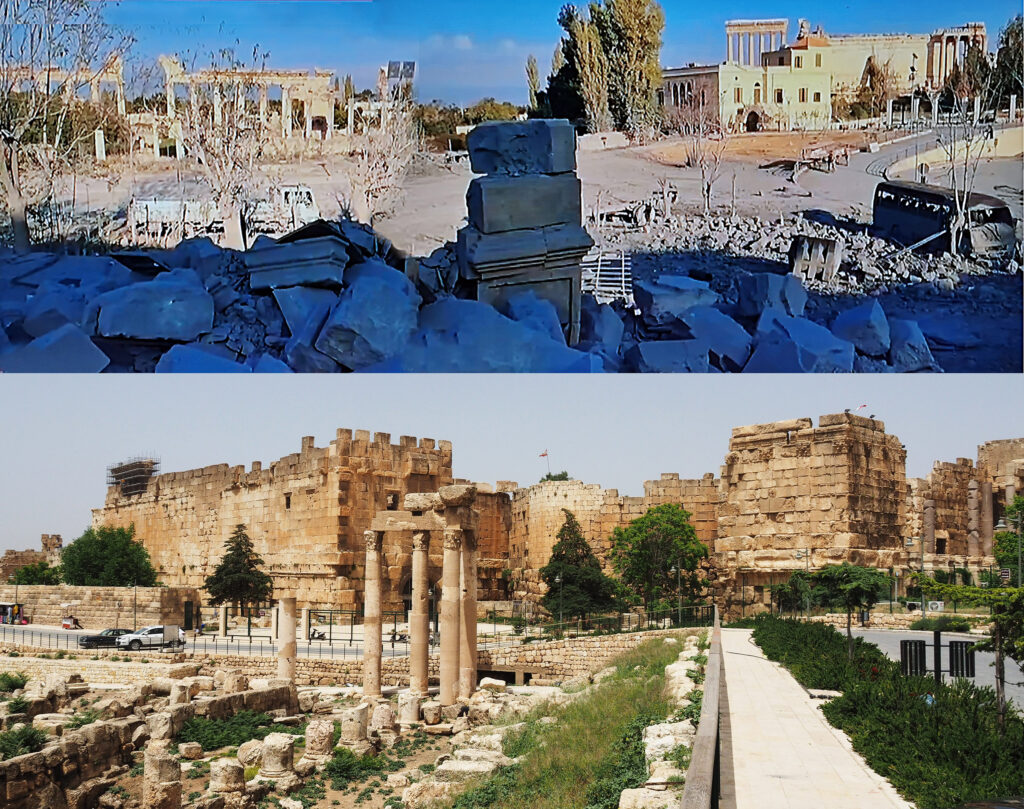
Lastly, here are a few more photos for the record, so we can see what needs protecting –
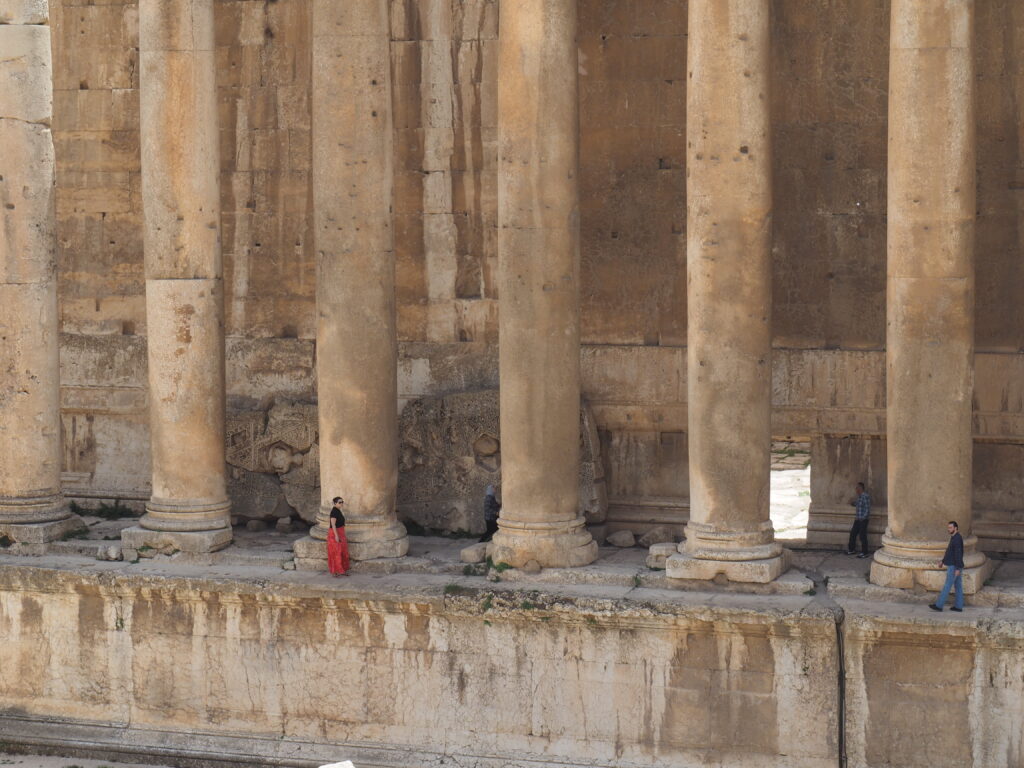
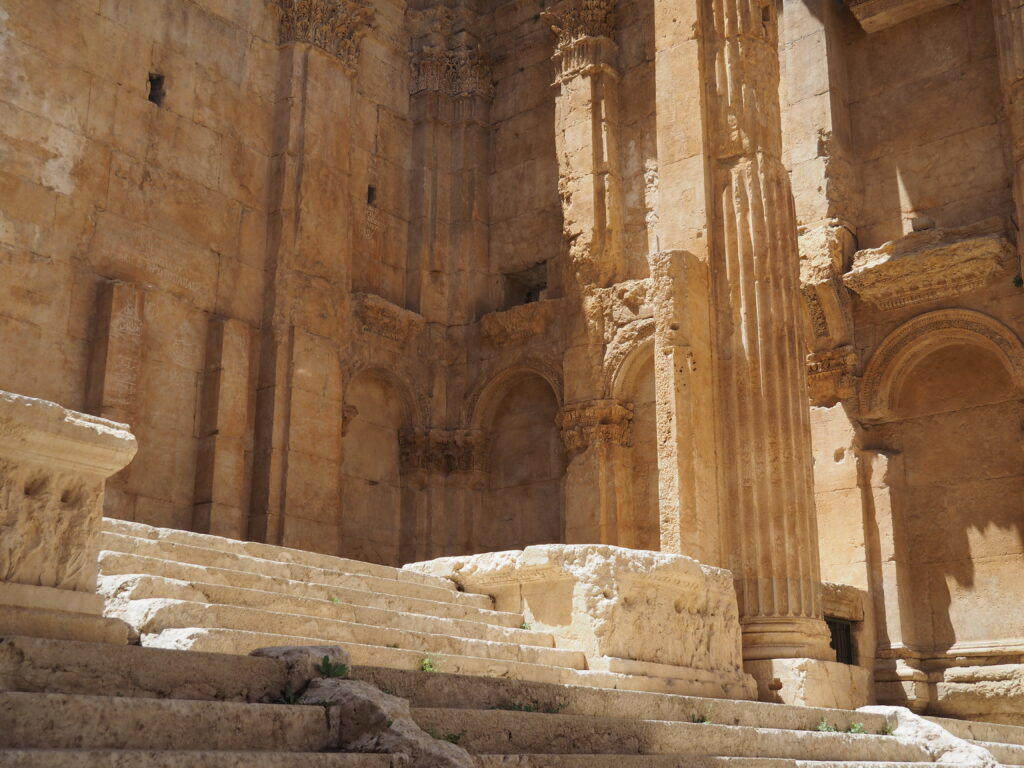
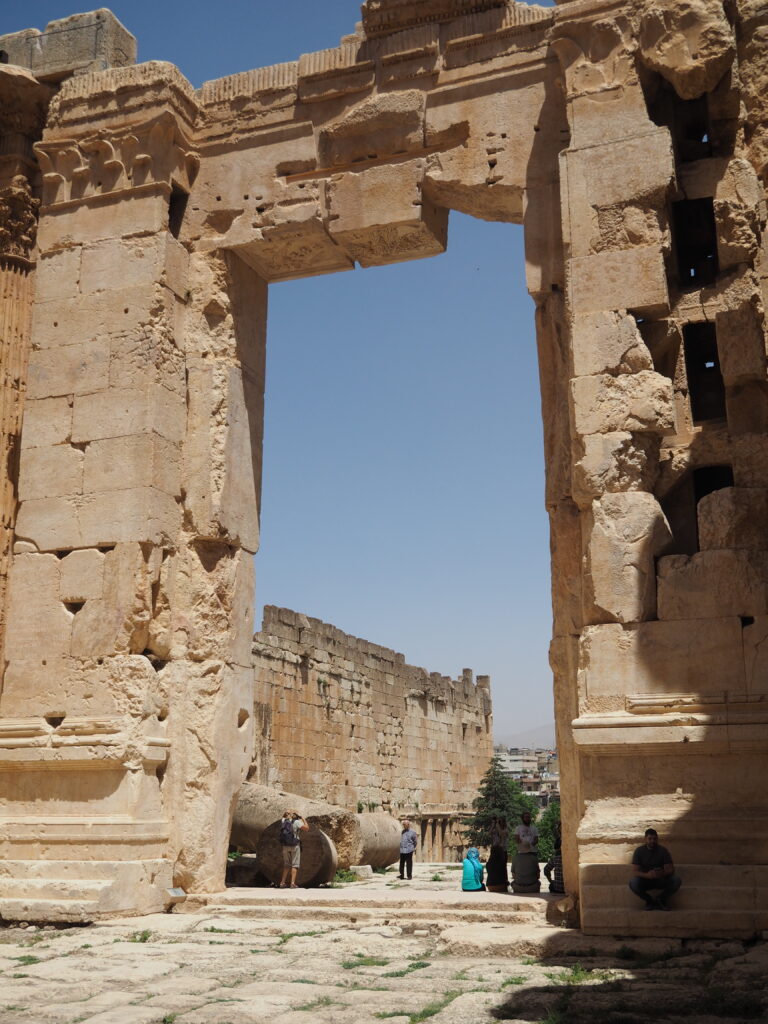
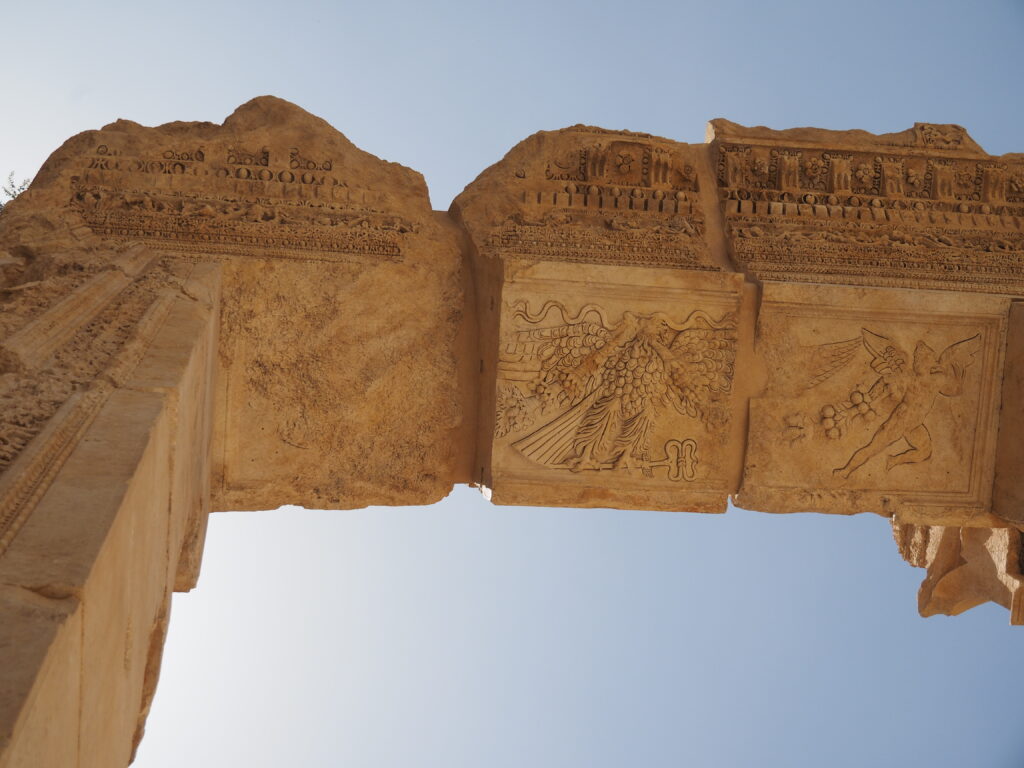
DM 13th November 2024
